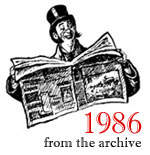
The Thought of Christopher Dawson
RECOVERING A CHRISTIAN HUMANISM
The case of the late Harvard Catholic historian Christopher Dawson is a curious one. Gifted with grace of style and an extraordinary lucidity of mind, he was widely read a generation ago, but now few of his books are still in print. For most historians this might be expected, but it is unusual for someone Saturday Review once called “the most exciting writer of our day…unequalled as an historian of culture.”
Certainly what Dawson had to say can now be seen as needing some refinement, but his books have in fact worn very well in the light of continuing research. They are, moreover, informed by a sense of the larger significance of things which one would have thought should earn them a permanent place among the classics of historical literature.
Doubtless their relative demise must be situated in a general shrinking of their most natural reading audience, authentically learned Catholics.
But, as they say, the times they are a-changing once more, and we have signs of renewed interest in Dawson’s thought. This is partly due to the recent biography of Dawson by his daughter, Christina Scott (A Historian and His World, London, 1984), but particularly tireless on Dawson’s behalf has been John J. Mulloy, who earlier performed such services for Dawsonian scholarship as the editing of The Dynamics of World History, a collection of some of Dawson’s most important writings. Mulloy, who has brought back into print other of Dawson’s works, founded the Society for Christian Culture some five years ago with the specific purpose of disseminating Dawson’s thought, and also serves as the editor of The Dawson Newsletter. His most recent contribution to making Dawson available is in cooperation with the newly founded Sophia Institute Press, which has just reissued Dawson’s Christianity and the New Age, introduced with an essay by Mulloy.
In what follows we shall reconsider this book, for it shows how fresh Dawson’s thought remains. The 20th century is passing through one of those moments of crisis in which the established civilizations are being either renewed or annihilated, but in no case left as they have been. To show the nature and possibilities of this civilizational apocalypse, Dawson traced Renaissance humanism from its Christian and historical origins through the present moment, when it is radically separated from its dynamic source in Christianity and is in danger of collapsing from its inner contradictions. The paradox is that when humanism originally derived its inspiration from Christianity, stress was laid on how godlike man is, but now, 500 years later, when in many ways the greatness of human possibility has been established, a humanism largely severed from Christianity has increasingly come to doubt man’s glory and freedom, and to see man as “a naked human animal shivering in an inhuman universe.”
You May Also Enjoy
Unworthy of Intelligent Discussion... Reading Andrew Greeley's Statistics... Uneasy With Avery Dulles
As members of society, we are bound to uphold the order of justice; as members of the Church, we are bound to uphold the order of charity.
Over a period of almost 50 years, in London, New York, Washington, D.C., and other…

